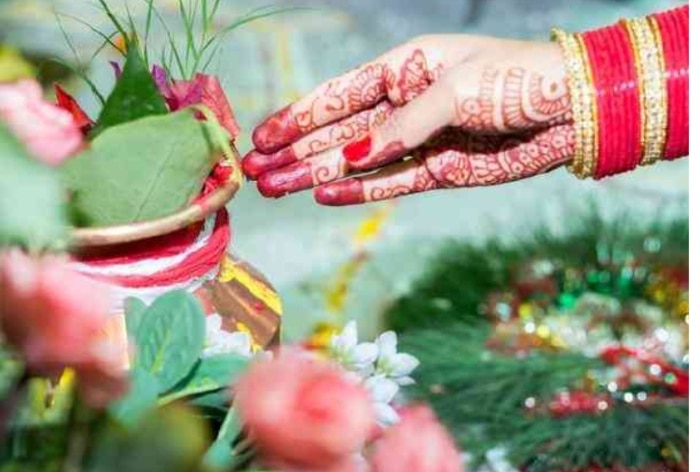Kajari Teej is an auspicious Hindu festival where women observe a fast for the long lives of their husbands. However, there are certain dos and don’ts to abide by.

In the olden days, there was a king named Dadurai and his queen who used to visit a forest called Kajali. The people sang beautiful Kajari songs to make the king and queen happy. This forest, Kajali, became a symbol of their deep love after the king passed away and the queen performed sati. However, This special day known as Kajari Teej or Badi Teej, celebrates the strong bond between husbands and wives. Every year, India lights up with grand celebrations for Teej. People sing the melodious Kajari songs, which were once sung to bring joy to the king and queen. The king’s passing and the queen’s devotion turned the forest into a place of eternal love.
Women also worship the Neem tree and the Moon God on Kajari Teej. They listen to vrat katha, a sacred story, and end their fast by offering water to their husbands after praying to the Moon. This day is about honoring the love between couples and the cherished memory of King Dadurai and his queen in the enchanting forest of Kajali.
Do’s on Kajari teej:
- Kajari Teej’s “Nirjala” fast showcases strong devotion. Fasting without food or water demonstrates deep dedication and inner strength. This helps people connect spiritually, feeling close to their higher self and the divine.
- During Kajari Teej, people seek blessings from Lord Shiva, Goddess Parvati, and Goddess Neemdi. This reflects a strong bond and the idea that divine guidance is vital for a lasting relationship. These deities remind us of the spiritual basis of marriages.
- Morning rituals of Kajari Teej go beyond the physical. Bathing and fasting have spiritual meaning. Cleaning the body and avoiding food/water purify the mind, aiding in connecting with one’s inner divine essence. This links the physical and spiritual, enhancing awareness throughout the day.
- At the core of Kajari Teej is making sattu dishes from grains like wheat, rice, and gram. These dishes are both nutritious and culturally important. Eating sattu at the start of the fast provides energy. It also adds cultural flavor, keeping traditions alive.
- The fast ends when the moon rises, symbolizing a lot. Breaking the fast pays respect to the Moon God. The moon represents beauty, emotions, and change, adding a poetic touch. It’s about being thankful for the inner strength that helped complete the fast.
Don’ts on Kajari teej
- To stay safe from the hot sun, it’s a good idea to stay inside. If you feel thirsty, you can have some fruit juice or a little water. This way, you’ll keep your body hydrated and feel good.
- If you’re a woman fasting on Kajari Teej, remember not to eat until you see the moon in the evening. This is really important for the special ritual and what makes the day special.
- On this day, it’s best to choose clothes in colors other than white. People avoid white clothes because they’re not the best choice for this occasion.
- Women usually wear their nicest clothes and jewelry on this day. It’s a tradition to look and feel beautiful, so they dress up really nicely.
- If you’re a woman, you can show your devotion by not eating or drinking anything until you see the moon at night. This fasting is a way to respect the occasion and connect spiritually.
- It’s important to be positive and kind on this day. Try not to say mean things about others or spread negativity. This special day is about being good to others and showing devotion.
